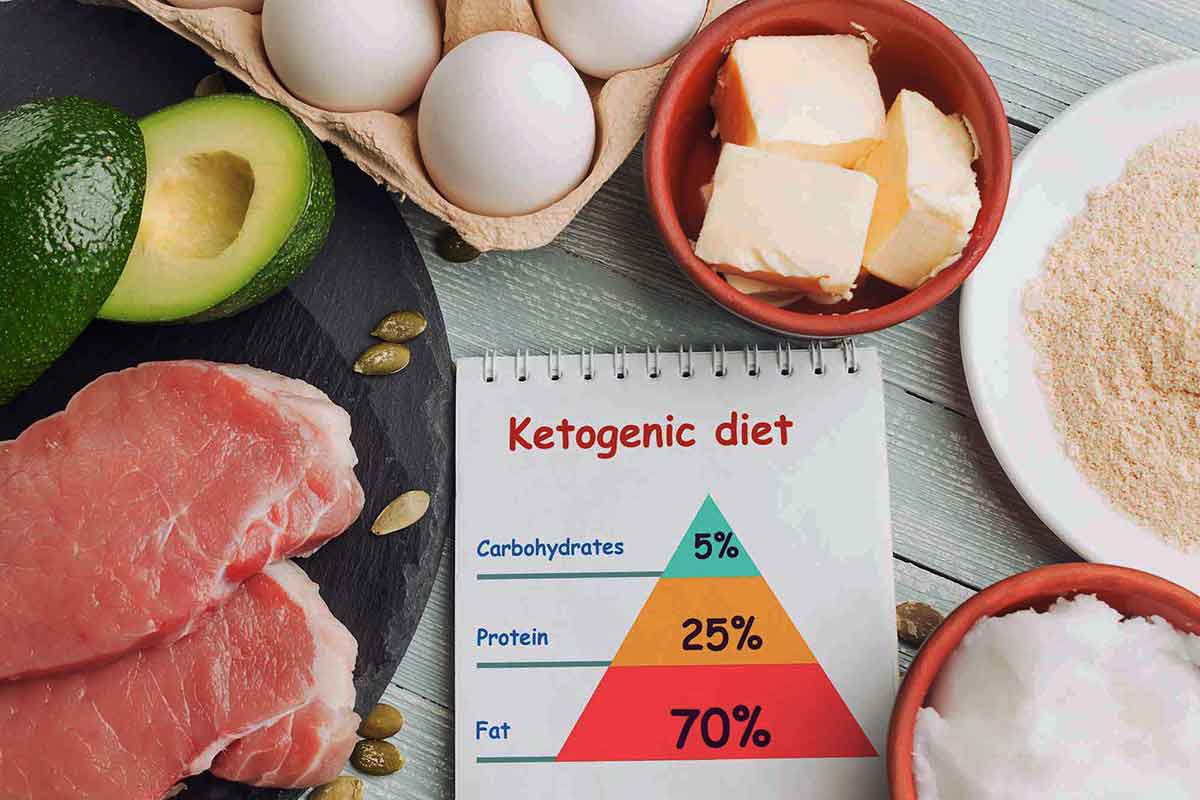How to Start
The goal of the keto diet is to increase your intake of healthy fat and decrease your intake of carbs (with moderate protein consumption).
You should know which foods are ideal. When planning your meals, you should include foods that are high-fat and low-carb. Here are a few examples:
- Healthy fats such as butter and coconut oil.
- Meat, poultry, and seafood.
- Full-fat dairy, such as cheese and cream (avoid milk).
- Nuts, seeds, and nut flours.
- Leafy greens like spinach and kale.
- Low-carb veggies, such as zucchini and cauliflower.
- Berries if you need a fruit fix.
- Herbs and spices, low-carb condiments.
These are the signs that your body is in ketosis:
- Bad breath
- Frequent urination
- Reduced appetite
- Increased energy and focus
- Weight loss
To experience the benefit of this diet change and make adjustments easier, you should follow some basic steps.
Restrict Carbohydrates
The first step of following a keto diet is slashing the number of carbs you consume. Limit yourself to 25-50 grams of net carbs per day. It’s imperative to read the food label—pay attention to the serving size and calculate each macronutrient accordingly.
Reduce and eliminate the following high-carb foods. They prevent your body from entering ketosis:
- Grains (bread, pasta, corn, rice).
- Starches (potatoes).
- Most high-carb alcohol (read keto-friendly alcohol drinks).
- Beans.
- Table sugar.
- High-sugar fruits.
- Most milk products, although some milk and dairy merchandise are fine for the keto diet. Read the food label carefully or use the keto food search engine.
You can also consider a carb detox to start the process of limiting your carbohydrates intake.
Limit Proteins
While proteins are better than carbohydrates on the keto meal plan, you still want to limit your protein intake as well. For optimal results, most of your daily calories should come from fat. Try to choose high-quality meats for proteins because processed and fried meats might contain hidden carbs.
Eat Enough Fat to Satisfy Your Appetite
At least 70 percent of your calorie intake should consist of fat. Don’t obsess over-consuming the correct ratio of fats in each meal. Include enough fats to satiate your appetite and don’t eat if you’re not hungry. The best weight loss results occur if you eat when you’re hungry. Your food sources for fat should be healthy meals. Avoid highly processed foods like canola oil, margarine, and other trans fats.
You Need Electrolytes
The keto diet can deplete electrolytes in your body. It’s important to achieve a proper balance. You can maintain electrolytes by seasoning your food with salt and including foods like bone broths or pickled vegetables in your diet. You can also take electrolyte supplements and drink keto-friendly electrolyte drinks.
Drink Plenty of Liquids
Dehydration can happen frequently while you follow the keto diet. Because ketones absorb water and you’re eliminating carbs that store water, extreme thirst may occur. Drink lots of water, perhaps a little more than the recommended eight cups a day. Regular tea, unsweetened herbal tea, and coffee are excellent substitutes but water is the healthiest liquid that benefits your body.
More Resources for the Keto Diet
Are you ready to start? It may seem overwhelming in the beginning but taking the next steps will help you get started.
- Start by choosing your desired weight goal.
- Then, use our keto macro limits calculator tool to determine the minimum and maximum macros to consume per day.
- Use the keto food search engine at KetoFoodist.com or the food label calculator tool to find keto-friendly eats. For more help, review our getting started guide.
- Learn how to maintain a keto diet and avoid these common mistakes.
- Learn about keto flu and how to relieve common symptoms.

